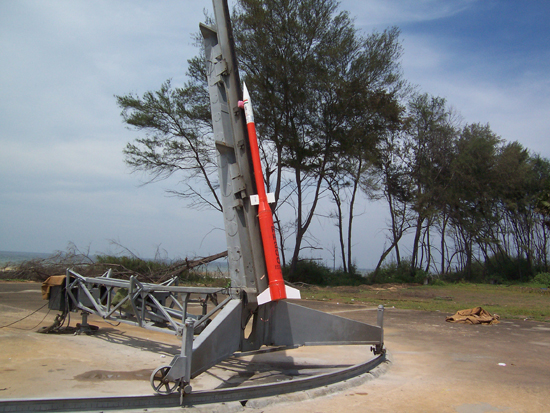Sounding Rockets
 Sounding rockets are usually one or two stage solid propellant rockets. They
are primarily intended for probing the upper atmospheric regions using rocket-borne
instrumentation. They also serve as platforms for testing prototypes of new components or
subsystems intended for use in launch vehicles and satellites. The launch of the first sounding
rocket US made ‘Nike Apache’ from Thumba near Thiruvananthapuram, Kerala on November 21, 1963,
marked the beginning of the Indian Space Programme. Later days saw launching of two-stage
rockets imported from Russia (M-100) and France (Centaure). While M-100 could carry a payload of
70 kg to an altitude of 85 km, the Centaure was capable of reaching 150 km with a payload of
approximately 30 kg. In 1970, the Hydrometeorological Services of the USSR signed an agreement
with ISRO to launch their meteorological sounding rockets, M-100, every week, from TERLS. This
programme continued uninterruptedly till 1993.
Sounding rockets are usually one or two stage solid propellant rockets. They
are primarily intended for probing the upper atmospheric regions using rocket-borne
instrumentation. They also serve as platforms for testing prototypes of new components or
subsystems intended for use in launch vehicles and satellites. The launch of the first sounding
rocket US made ‘Nike Apache’ from Thumba near Thiruvananthapuram, Kerala on November 21, 1963,
marked the beginning of the Indian Space Programme. Later days saw launching of two-stage
rockets imported from Russia (M-100) and France (Centaure). While M-100 could carry a payload of
70 kg to an altitude of 85 km, the Centaure was capable of reaching 150 km with a payload of
approximately 30 kg. In 1970, the Hydrometeorological Services of the USSR signed an agreement
with ISRO to launch their meteorological sounding rockets, M-100, every week, from TERLS. This
programme continued uninterruptedly till 1993.
In 1967, ISRO started launching a series of our own sounding rockets named Rohini from TERLS. RH-75, with a diameter of 75mm was the first truly Indian sounding rocket, which was followed by RH-100 and RH-125 rockets. The sounding rocket programme was indeed the bedrock on which the edifice of launch vehicle technology was built. The experience gained was of immense value in mastering of solid propellant technology and allied systems of the launch vehicles.Several scientific missions with national and international participation have been conducted using the Rohini sounding rockets.
Operational sounding Rockets
Currently, operational sounding rockets include three versions namely RH-200, RH-300-Mk-II and RH-560-Mk-III. These cover a payload range of 8 to 100 kg and an apogee range of 80 to 475 km. The details are as given below.
| Vehicle | RH-200 | RH-300-Mk-II | RH-560-MK-III |
| Payload (in kg) | 10.5 | 70 | 100 |
| Altitude (in km) | 75 | 120 | 550 |
| Purpose | Meterology | Middle atmospheric studies | Upper atmospheric studies |
| Launch Pad | Thumba | Thumba/SDSC-SHAR | SDSC-SHAR |